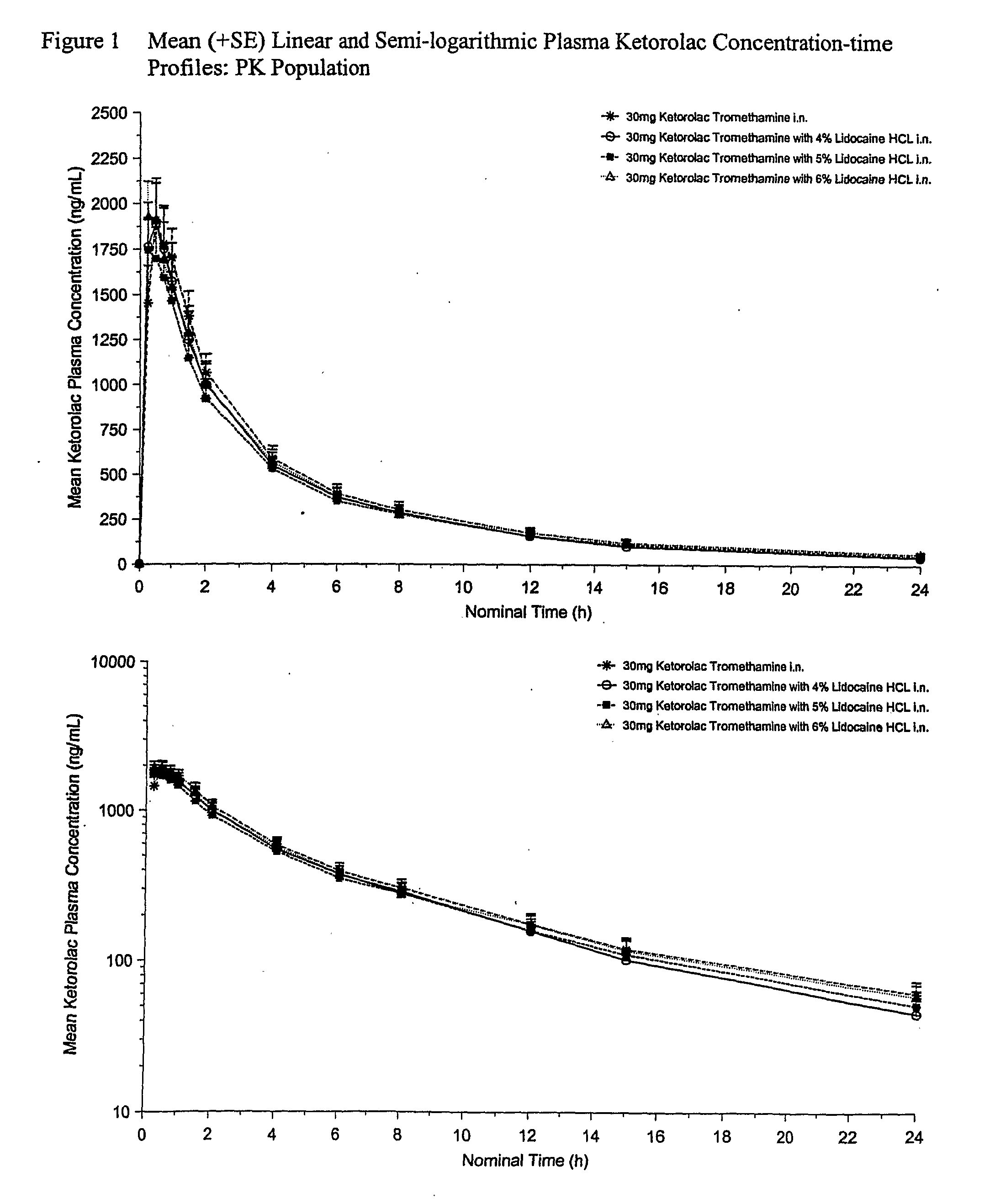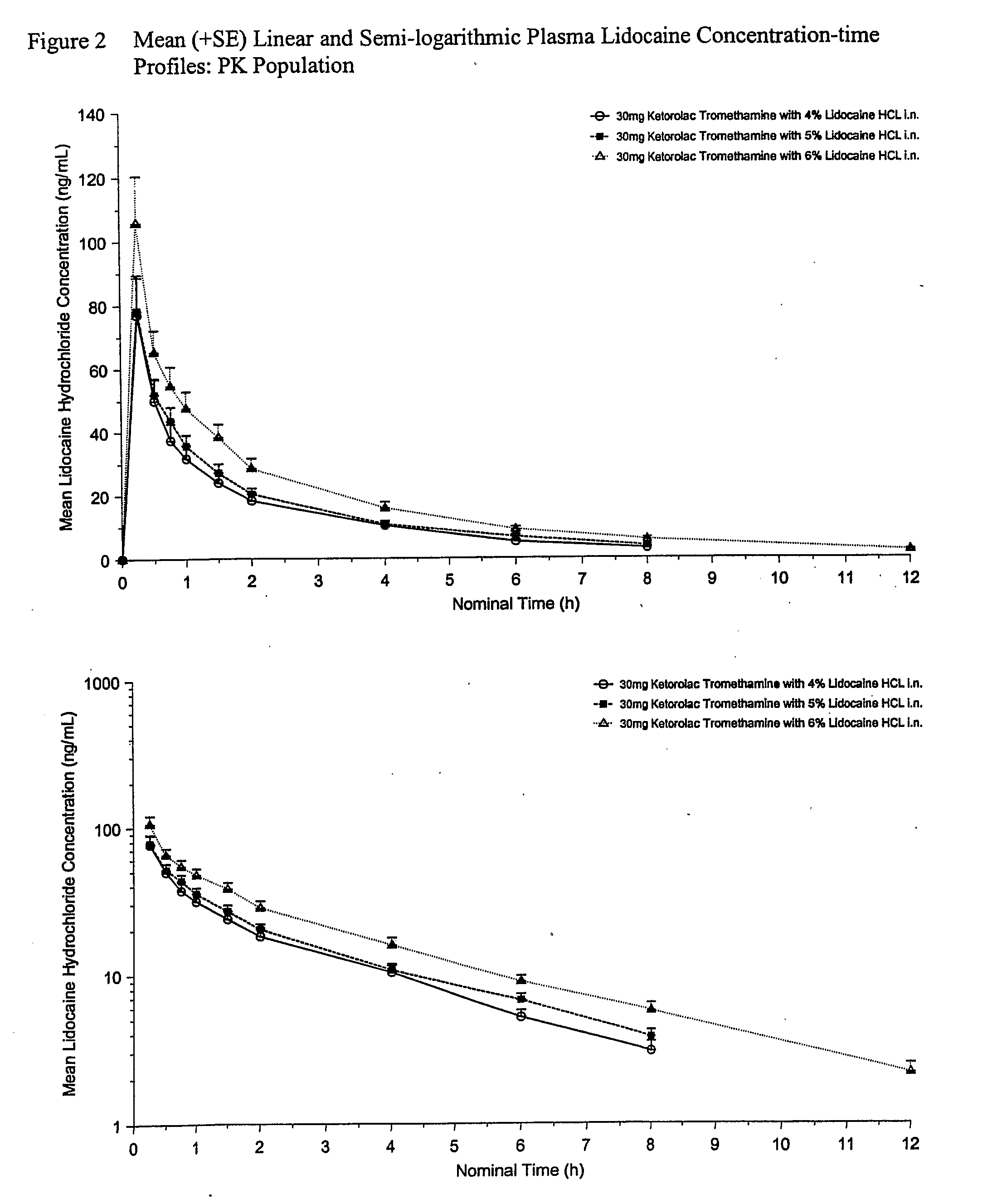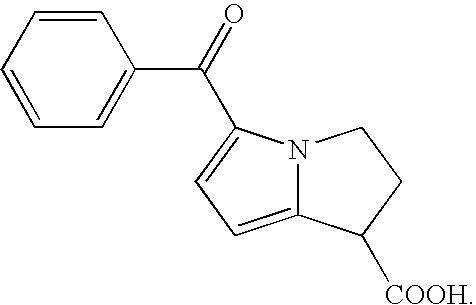Therapeutic compositions for intranasal administration of ketorolac
a technology of intranasal administration and therapeutic compositions, which is applied in the direction of drug compositions, biocide, heterocyclic compound active ingredients, etc., can solve the problems of stinging or irritation, eye watering, stinging, etc., and achieve the effect of reducing the risk of recurrence, and improving the effect of recurren
- Summary
- Abstract
- Description
- Claims
- Application Information
AI Technical Summary
Benefits of technology
Problems solved by technology
Method used
Image
Examples
example 1
[0066]This example provides a description for making compositions for nasal administration in accordance with the invention. A solution was prepared in accordance with the proportions shown in Table 1. Lidocaine hydrochloride was added to the solution to give the compositions of the invention shown in Table 2.
TABLE 1Ketorolac tromethamine, USP 15%Sodium EDTA, NF0.02%Potassium phosphate, NF(q.s. to pH 7.2)Water for Injection USP (q.s.)100 g
TABLE 2IngredientsIIIIIIKetorolac tromethamine, USP 15% 15% 15%Sodium EDTA, NF0.02%0.02%0.02%Potassium phosphate, NF (q.s. to pH 7.2)Lidocaine hydrochloride 4% 5% 6%Water for Injection USP (q.s.)100 g100 g100 6
example 2
[0067]This example provides a description of a phase I clinical study (a double-blind, randomized 4-way crossover) carried out to determine, i.a., if the presence of lidocaine hydrochloride in nasally administered formulations of ketorolac has any adverse effect on the PK profile of ketorolac. The results show that the PK characteristics are improved in the preferred formulations (5-6% w / v) by the presence of the anesthetic lidocaine hydrochloride, and otherwise not adversely affected. In addition, the safety and tolerability data for the formulations were evaluated.
[0068]The clinical study included 16 healthy volunteers who were recruited for the study in which each volunteer received 4 nasally administered spray formulations, three of which are compositions that represent an aspect of the invention. There was a wash-out period of 3-7 days between each dose. The four aqueous spray compositions were prepared as follows:
KT(1)L(2)NaEDTA(3)KPO4(4)Water(5)A:15%0 0.02%pH 7.2100 gB:15%4%0...
example 3
[0073]This example describes a study for postoperative patients to compare the safety, tolerability, and pharmacokinetics (PK) of 3 formulations of intranasal (IN) ketorolac tromethamine.
[0074]The study is a double-blind, parallel study in postoperative patients. Subjects receive 1 of 3 formulations of IN ketorolac tromethamine 30 mg or placebo. Two of the formulations are preferred formulations according to this inventions. The study includes enrolling fifteen subjects in each group for a total of 60 subjects. Each formulation is administered to each subject IN (one spray into each nostril).
[0075]Postoperative patients suitable for the study include patients age 18 through 60 years, with body weight within 20% of ideal body weight as per the MetLife height and weight tables for men and women (version 1999).
[0076]Subjects are randomly assigned to receive either:[0077]Treatment A (a composition known in the art)—single IN dose of 30 mg ketorolac tromethamine (one spray into each nost...
PUM
| Property | Measurement | Unit |
|---|---|---|
| pH | aaaaa | aaaaa |
| composition | aaaaa | aaaaa |
| pH | aaaaa | aaaaa |
Abstract
Description
Claims
Application Information
 Login to View More
Login to View More - R&D
- Intellectual Property
- Life Sciences
- Materials
- Tech Scout
- Unparalleled Data Quality
- Higher Quality Content
- 60% Fewer Hallucinations
Browse by: Latest US Patents, China's latest patents, Technical Efficacy Thesaurus, Application Domain, Technology Topic, Popular Technical Reports.
© 2025 PatSnap. All rights reserved.Legal|Privacy policy|Modern Slavery Act Transparency Statement|Sitemap|About US| Contact US: help@patsnap.com



